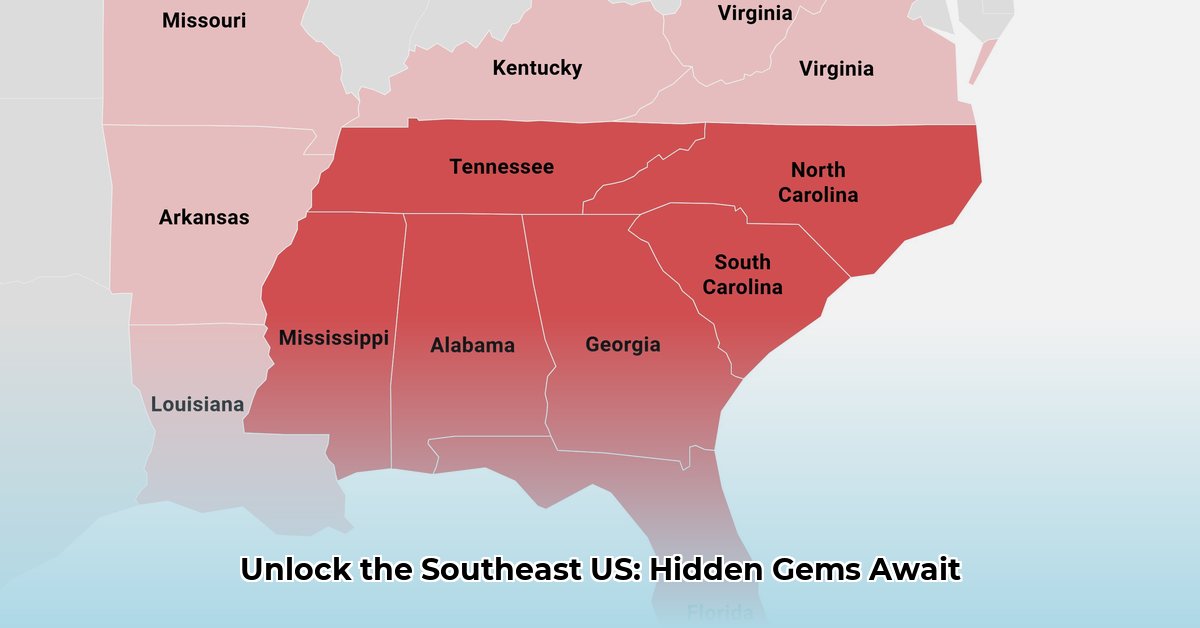The Southeastern United States, a vibrant tapestry woven from Florida’s sun-kissed shores to the rugged peaks of West Virginia, presents a captivating blend of landscapes and cultures. Understanding this dynamic region necessitates a deeper exploration beyond conventional maps. This exploration demands unraveling the intricate connections between geography, economy, and the diverse communities that call the Southeast home. For a visual overview, check out this Southeast map.
Beyond the Surface: Geography’s Influence
The Southeast’s diverse geography, encompassing majestic mountains, fertile plains, and sprawling coastlines, profoundly influences its multifaceted character. These landscapes shape agricultural practices, fuel tourism, and dictate settlement patterns. To harness this diversity for sustainable economic growth, we must delve deeper than surface-level observations. For example, understanding the specific soil compositions across the region allows for optimized agricultural practices, leading to increased yields and reduced environmental impact. Similarly, recognizing the nuances of each microclimate informs development strategies, ensuring resilience against extreme weather events and promoting eco-conscious urban planning. This granular understanding unlocks the potential for targeted investments in infrastructure, education, and industries best suited to each unique sub-region.
Data-Driven Insights: Unveiling Hidden Connections
Standard maps offer a basic framework of cities, roads, and political boundaries. However, to truly comprehend the Southeast’s intricate complexities, we require a more nuanced approach. Imagine a map that not only pinpoints a river’s location but also illustrates its impact on local ecosystems, agricultural productivity, and flood risk. Consider the potential of visualizing real-time data on traffic patterns, air quality, and energy consumption overlaid onto a detailed geographic map. This data-driven approach provides invaluable insights for informed decision-making, enabling policymakers, businesses, and communities to anticipate challenges and capitalize on opportunities. This data-driven approach empowers stakeholders to make informed decisions regarding resource allocation, infrastructure development, and disaster preparedness.
Bridging the Data Gap: A Call for Granularity
While existing data provides a valuable foundation, critical gaps hinder a comprehensive understanding of the Southeast. We need more precise information on biodiversity distribution, demographic nuances, and the intricate links between location and economic activity. For instance, understanding how the Appalachian Mountains have shaped agricultural practices over generations informs sustainable development strategies. Analyzing the specific contributions of coastal areas to the tourism economy allows for targeted investments in infrastructure and preservation efforts. This granular data empowers policymakers to create effective economic development strategies that address regional disparities and promote equitable growth. Furthermore, access to comprehensive data facilitates collaboration between government agencies, research institutions, and private sector organizations, fostering innovation and driving progress.
Empowering Action: Strategies for a Thriving Southeast
Transforming data-driven insights into tangible action requires tailored strategies across diverse sectors. Educators can incorporate interactive, data-rich maps into curricula, fostering critical thinking skills and geographical literacy. Tourism businesses can leverage geospatial data to curate personalized visitor experiences, highlighting the region’s unique cultural and natural attractions. Environmental agencies can employ advanced mapping technologies to identify vulnerable ecosystems, monitor pollution levels, and implement effective conservation measures. This collaborative approach, powered by data and technology, empowers stakeholders to address complex challenges and build a more sustainable and prosperous future for the Southeast.
Navigating the Future: Balancing Risks and Rewards
The Southeast faces a dynamic future fraught with both challenges and opportunities. Climate change, economic inequality, and aging infrastructure pose significant risks. Mitigating these risks necessitates proactive measures, such as investing in resilient infrastructure, promoting sustainable development, and fostering economic diversification. However, by embracing innovation, investing in education and workforce development, and fostering regional collaboration, the Southeast can unlock unprecedented opportunities. The region’s rich cultural heritage, diverse natural resources, and strategic location position it for significant growth in the 21st century. By embracing a future-oriented perspective, the Southeast can navigate potential challenges and emerge as a global leader in innovation, sustainability, and economic prosperity.










